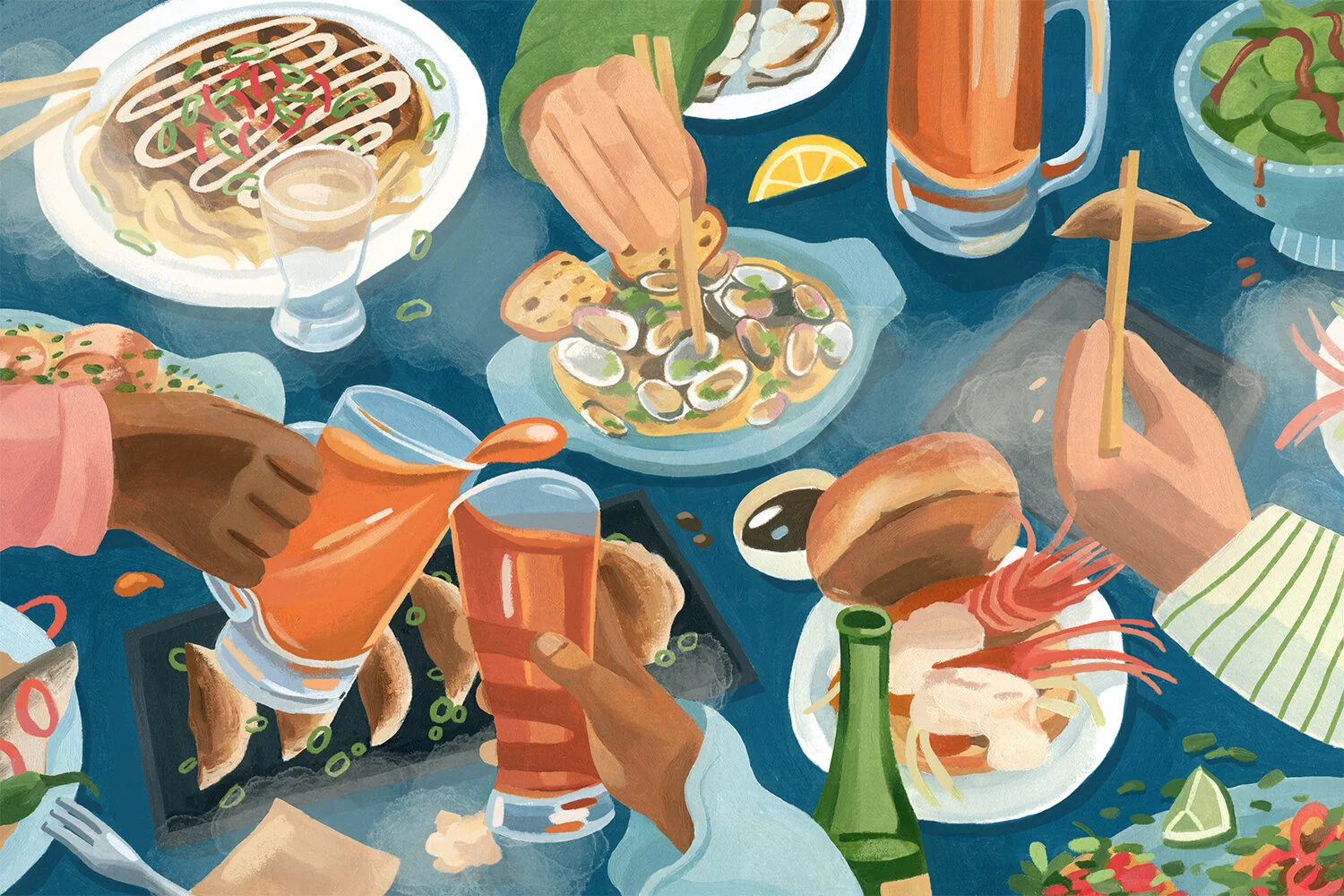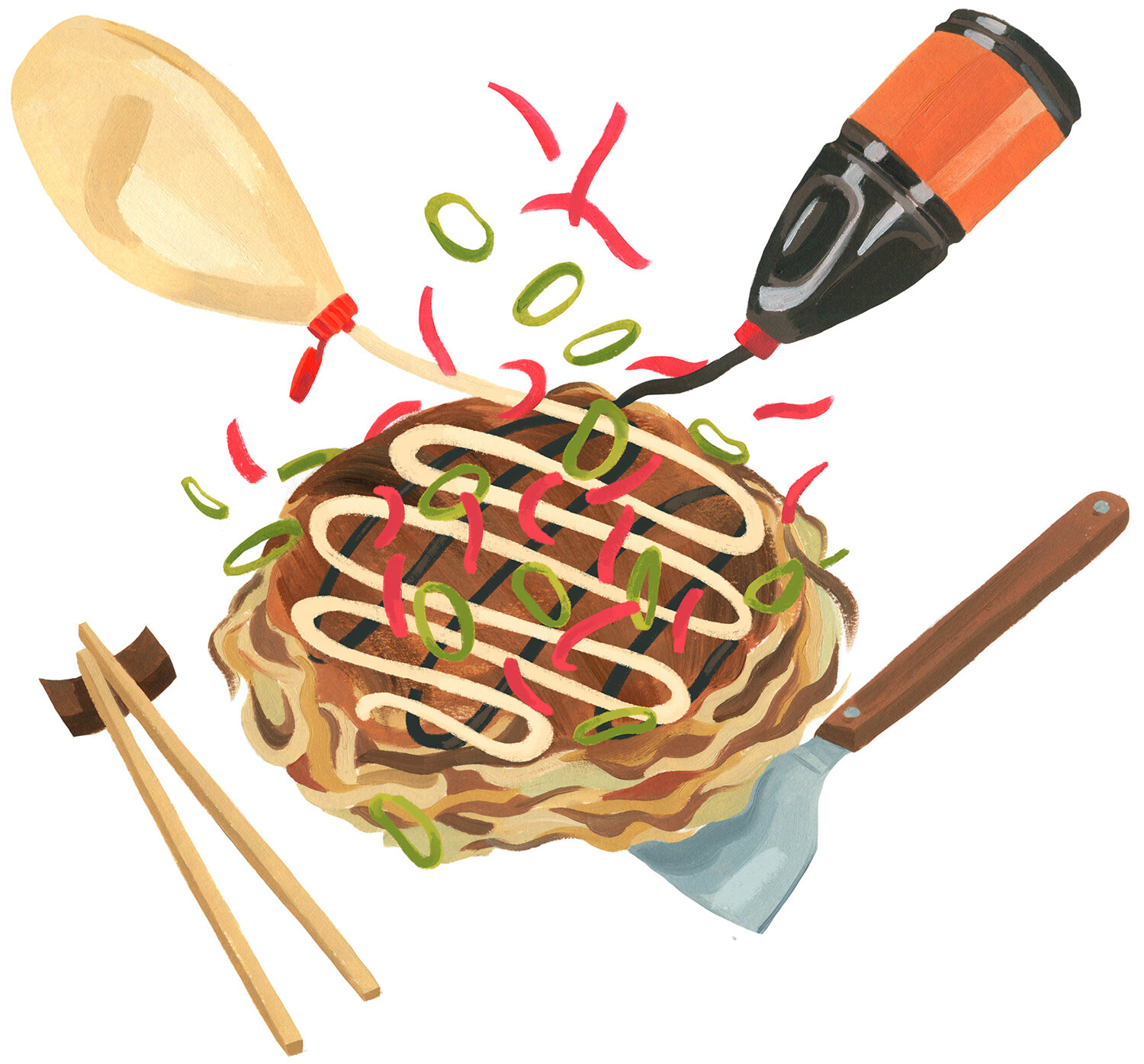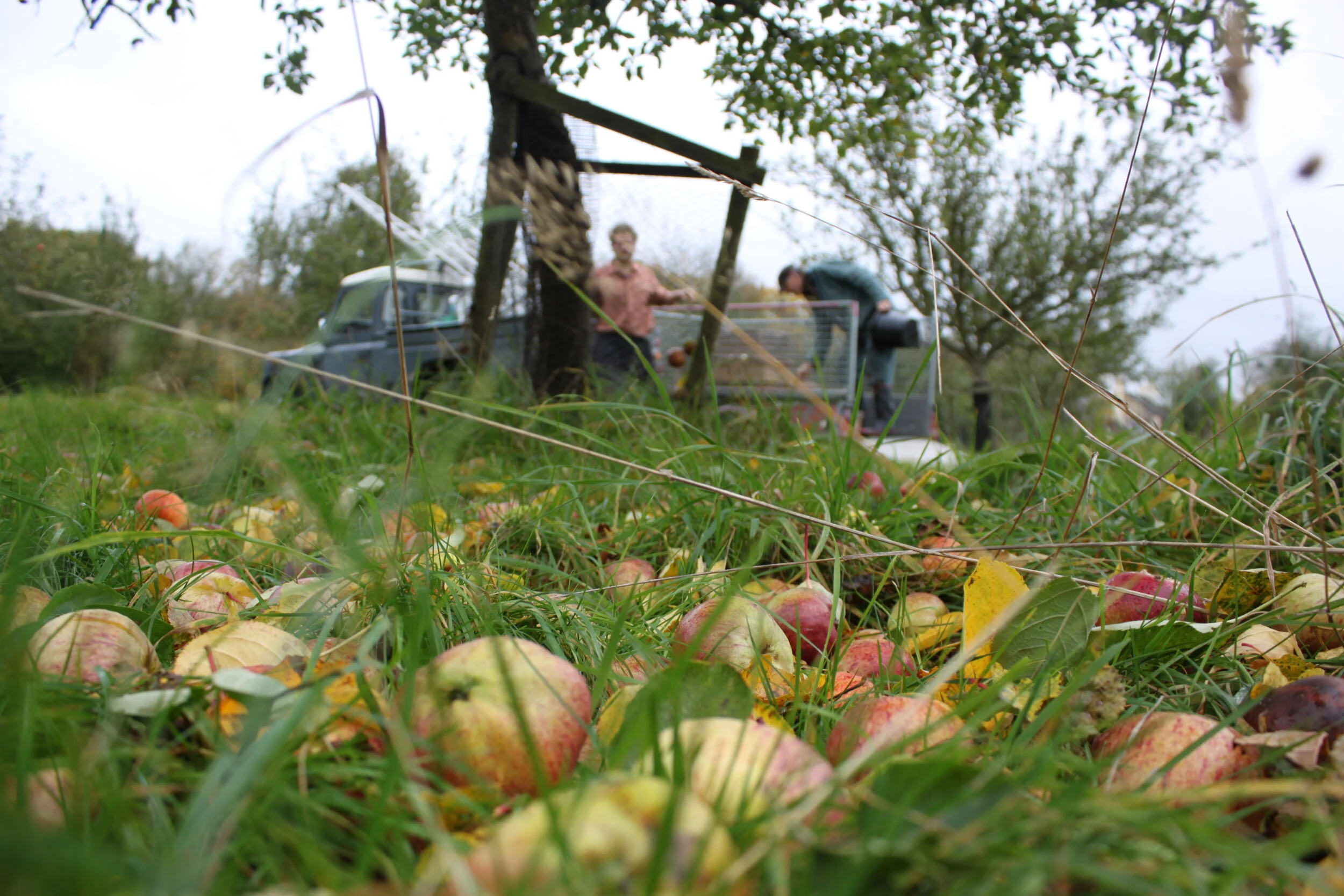How Fumio Tanga is Bridging the Izakaya-Pub Divide with Sho Foo Doh
IZAKAYA
/ɪzəˈkʌɪə/
noun, from the Japanese izakaya 居酒屋A type of Japanese bar in which small dishes and snacks are served; literally, a place to stay and drink.
We have Radiohead to thank for one of Britain’s best izakaya.
In 1996, a young indie rock enthusiast from Hiroshima named Fumio Tanga was prompted to move to the UK after seeing Radiohead perform an electrifying live show in Fukuoka.
“I was just blown away,” Fumio recalls, with some residual excitement still detectable in his voice, more than two decades later. The experience was so powerful that he quit university the very next day to work full-time, saving money to relocate so that he could fully immerse himself in the British alternative music scene.
A few months later, Fumio was living in London, studying English and graphic design. And as this kind of story so often goes, he never went back.
Japan’s loss is the UK’s gain, because Fumio now sells some of the most delicious Japanese drinking food in the country, under the banner of Sho Foo Doh—the name taken from the traditional Japanese confectionery shop his late grandparents formerly ran in Hiroshima.
Cooking for a living wasn’t part of Fumio’s plan; he started his professional life in the UK as a graphic designer and later worked for a fashion label as a liaison to customers in Japan. When that label closed down, he began designing and selling graphic t-shirts and continued to pursue his passion for music by working as a DJ.
To make ends meet, he got a job at national music retail chain HMV, but that was right around the time that the entire record store industry was on its last legs, lurching irreversibly into oblivion. With staff being cut at an alarming rate, Fumio realised he had to pivot once again.
“I needed to do something before it was too late,” he tells me. “I started looking for jobs in fashion, or something I had experience in, but I didn’t get any results. I didn’t even get interviews, so I was kind of freaking out.”
***
Serendipitously, Fumio saw an advertisement for Chatsworth Road Market in Clapton, East London, which was opening just around the corner from where he was living at the time. They were recruiting traders, so Fumio figured he may as well give it a go, spurred on by the realisation that there was a big okonomiyaki-shaped hole in the market that needed filling.
“I was cooking okonomiyaki for friends at home, and they were like, ‘Fuck! I’ve never had anything like this,’” Fumio says. “It was pretty popular, and it’s quite easy to make, and it’s cheap enough, so I thought I could do it at a stall. I applied, and I got it straight away.”
For the uninitiated, okonomiyaki are savoury pancakes, filled with a wide variety of ingredients and topped with a quintet of extraordinarily delicious condiments: tangy brown sauce; eggy Japanese mayo; aonori seaweed flakes; pickled ginger; and wafer-thin shavings of dried, smoked tuna called katsuobushi. There’s a lot to love about okonomiyaki, and at Fumio’s new stall they proved instantly popular. Its success soon led to a pop-up in the back of a bookshop, also on Chatsworth Road.
“It was semi-illegal,” Fumio recalls, then corrects himself with a chuckle. “It was definitely illegal!”
Illustrations by Grace Helmer
That was in 2010, and Fumio has been running Sho Foo Doh ever since as residencies in pubs and cafés across London, and even at an enormously popular one-off pop-up event in Australia.
Fumio’s food is easy to love, full of flavour but also real personality. It’s not just the same old karaage and tataki you find on every other Japanese menu in town, it’s food that’s unique to Fumio’s Hiroshima heritage, and his own personal tastes.
The heart of the Sho Foo Doh operation is okonomiyaki, piled high with noodles and cabbage in the proper Hiroshima style, and served alongside what Fumio sometimes calls “(un)classics” like sesame-crusted cauliflower, vegan gyoza, and a delightful little fried sardine sandwich, which is kind of like a Filet-O-Fish, refracted through an izakaya lens.
***
I’ve known Fumio for about seven years now. We met via Twitter, back when people actually made friends on social media, rather than just enemies. During the supermarket horsemeat scandal of 2013, we got into a half-serious discussion along the lines of: “what’s the big deal? They eat horse in Japan all the time!” This ultimately led to us collaborating on a multi-course horsemeat dinner along with our friend Patrick Knill, a specialist in the foods of Okinawa and Osaka.
Both Fumio and Patrick are kindred spirits of mine when it comes to Japanese food. We’re amateur hobbyists who became professionals, and our particular passions within Japanese cuisine are regional specialities, along with what’s called B-kyū gurume (B-grade gourmet), a term of endearment bestowed upon the rougher, cheaper side of Japanese gastronomy—things like ramen, yakisoba, beef bowls, and curry rice. These kinds of dishes tend to be great drinking food, which is one reason why Fumio’s cooking has been so enduringly popular here in London. Okonomiyaki is not delicate food of meagre portion; it’s as filling and hearty as fish and chips or steak and kidney pie—it’s perfect for the pub.
Of course, the very idea of pub food in Britain is a relatively recent development; Sho Foo Doh is only possible as a pub residency now because of how British society has gradually come to disavow the old, foolish mantra of “eating is cheating” and embrace a more European—or Japanese—way of drinking.
“You didn’t see anyone eating food at the pub back then—when I first came here. [It was] Crisps or Scampi Fries at most. I literally saw nobody eating food,” he says. “But now pretty much every table has food, even if they just came in for a drink. It’s changed massively.”
““The izakaya is for everyone. From rich to poor, they go.””
Fumio attributes this change to a continental influence; he speculates that the groundwork for serving good food—Japanese or otherwise—in British pubs, was laid by tapas bars, osterie, and similar European modes of drinking and dining that have become fashionable in recent years.
“What I liken izakaya to here, are more like those trendy natural wine places where they serve small plates. That’s more the izakaya vibe,” he tells me.
But where pubs are more izakaya-like is in their inclusivity: “The wine bar atmosphere is a bit more exclusive, and prices are a lot higher,” Fumio says. “In terms of how people eat and drink together—that’s what an izakaya does, but in a much more democratic way… The izakaya is for everyone. From rich to poor, they go.”
Since he serves his food in pubs rather than in his own dedicated Japanese restaurant, Fumio says that his menu is geared towards pleasing a typical British palate.
“In the end what I found is that they only wanted burgers and fries,” he tells me. So of course, he serves burgers and fries, with Japanese flavours. He even does Taco Tuesdays and has served traditional roast dinners on Sundays.
He also thinks if he were to take his menu and serve it at an izakaya in Japan—maybe not the Sunday roasts—most Japanese people wouldn’t bat an eye at it, and would probably quite like it.
“At the end of the day, it’s got okonomiyaki, it’s got fish, it’s got deep-fried things. And as for the tacos, I think people would be up for the experiment. The Japanese will take it because we have a bit more of an open-minded view on food and drinks.”
Fumio agrees with my assessment that the boundaries as to what can or cannot be served in a Japanese izakaya are blurry, and almost anything is acceptable so long as it fits the bill of drinking beer and having fun. In many ways, this is another thing izakaya and British pubs increasingly have in common as British tastes become more cosmopolitan, and pub food offerings start to include influences from around the world.
A curry is a given, of course, but my local pub also serves tagine, risotto, Buffalo wings, Padron peppers, Korean fried chicken, and schnitzel with a “chipotle yoghurt”(ooh la la!) in addition to the usual fish and chips, and pie. Fumio points out that the key to izakaya menus, as it is in British pubs, is to have plenty of crowd-pleasers, which explains why both of them have started to incorporate popular dishes and flavours from around the world.
Still, I should be cautious not to overstate the similarities between pubs and izakaya; Fumio notes that there are a few key respects in which they remain quite different. First of all, people in Japan don’t always do all their eating in one place. Instead of hunkering down at a table at the pub all night and having a single, solid meal there, in Japan it would be more common for people to start at a casual izakaya with a few snacks, then move on to karaoke (with more snacks,) and then perhaps another bar (again: snacks) before finishing the night somewhere like a ramen shop or okonomiyaki place.
This isn’t just for fun, it’s also strategic; if you keep eating all night, you can drink more, and for longer. Also, the actual content of izakaya meals differs hugely, featuring more fish and vegetables than British pub grub, in keeping with traditional Japanese expectations regarding nutrition and balance in food. In fact, when I ask Fumio about what his ideal izakaya would be like, it starts to sound really quite different from a typical British pub.
“I tend to go for izakaya that specialise in seafood. And they have to have a really good selection of sake for me,” he says. “As for the atmosphere, I don’t want anywhere that’s like, hoity-toity. [It should be] a bit run down, I’m definitely not looking for coolness.”
Fumio also mentions the importance of ozashiki, or tatami rooms, which provide a sense of privacy, allowing people to be more uninhibited and boisterous.
“I do like ozashiki because then we can be as loud as possible, and usually we can smoke in them,” Fumio adds. “I don’t like ozashiki all the time; sometimes it’s nice to just walk in and be surrounded by a lot of people having fun. But if you’re going with a good, strong set of friends, and you just want to have a conversation, I think it’s quite nice to have your own booth.”
“Ozashiki, seafood, good sake. Those three things. And it should be cheap, obviously!”
An izakaya with great seafood, nice sake, and private rooms at affordable prices would be fairly easy to come by in Japan, but a British pub with those things remains a highly unlikely fantasy. [Perhaps someone in the Japanese restaurant business should open one—ed.] Then again, who knows? Maybe in another ten or twenty years, the pub-izakaya divide will have narrowed further, to a point where it’s not so far-fetched.
If there was a British pub in my neighbourhood that served a good range of sake, I would be beside myself with delight, and I don’t think I’d be the only one. In many ways, Sho Foo Doh is already a perfect sort of pub-izakaya hybrid—and it’s hard to imagine a better local than that.
Sho Foo Doh is currently on hiatus during lockdown, but their next residency will be at the Filly Brook, Leytonstone in April 2021, with outdoor seating only in line with government regulations.
Tim only took half his fee and requested the rest be donated to charity, we matched this and made a donation of £200 to Sisters Uncut a feminist group which takes direct action for domestic + sexual violence services.













